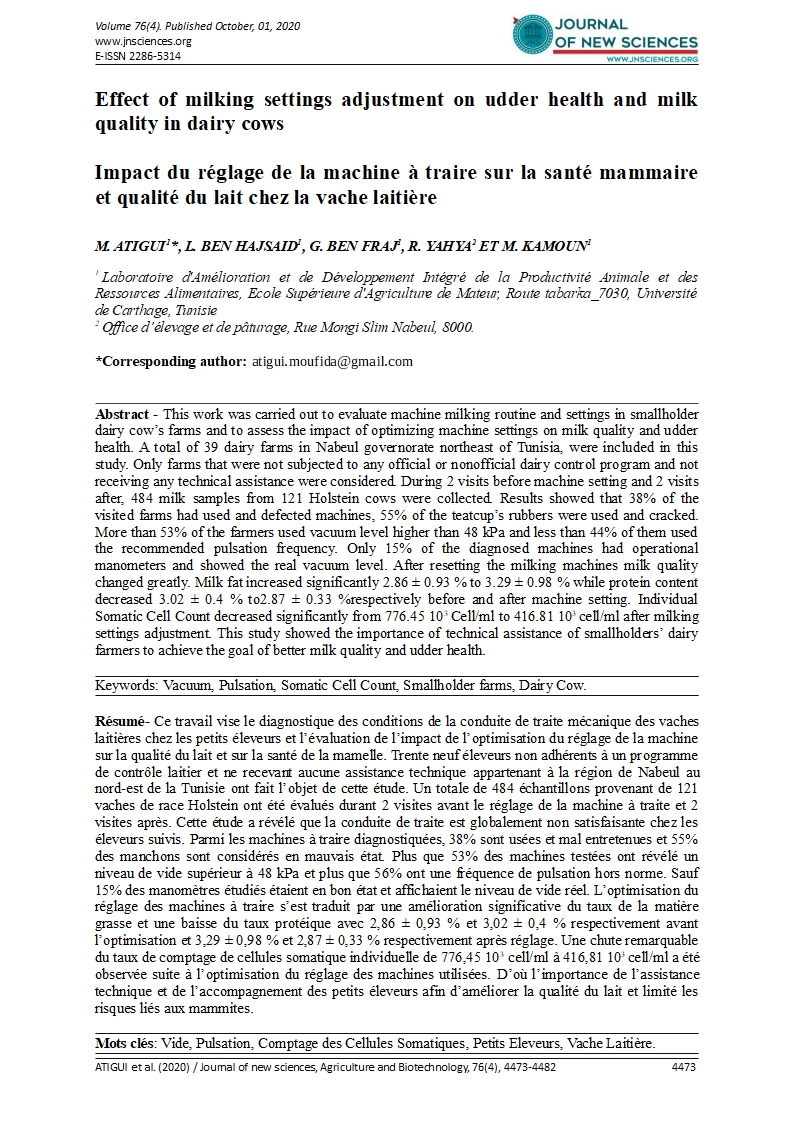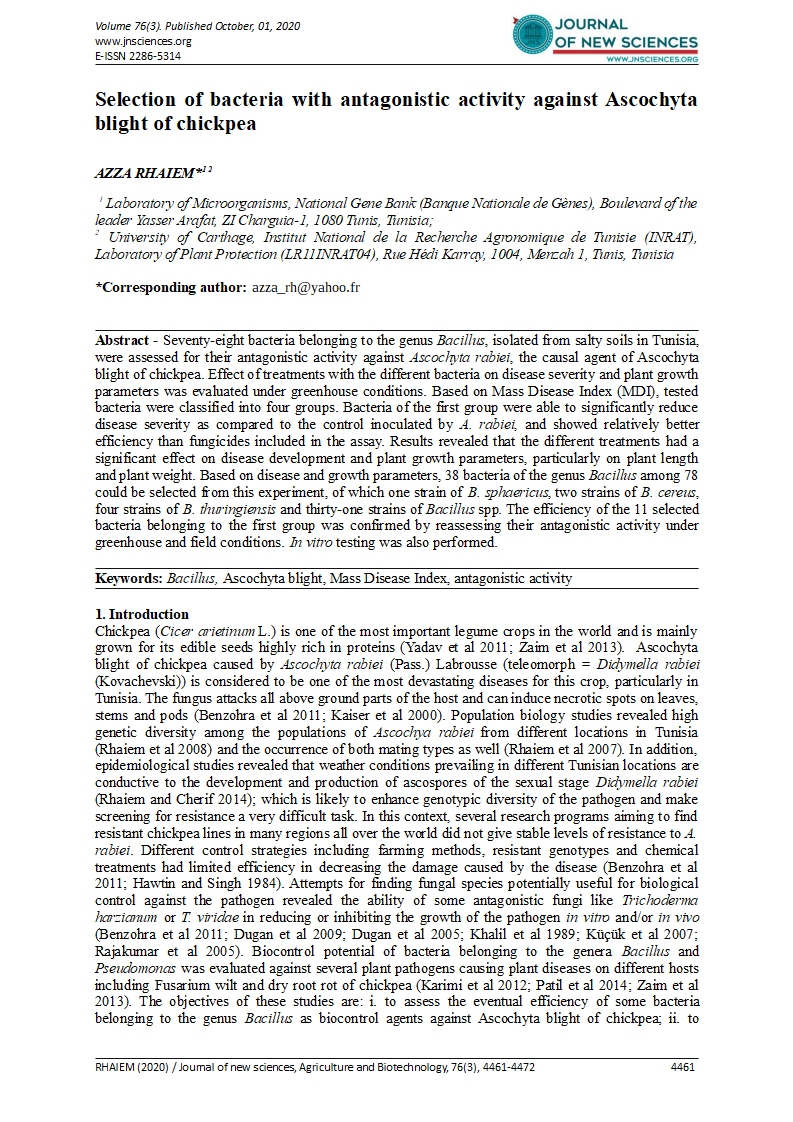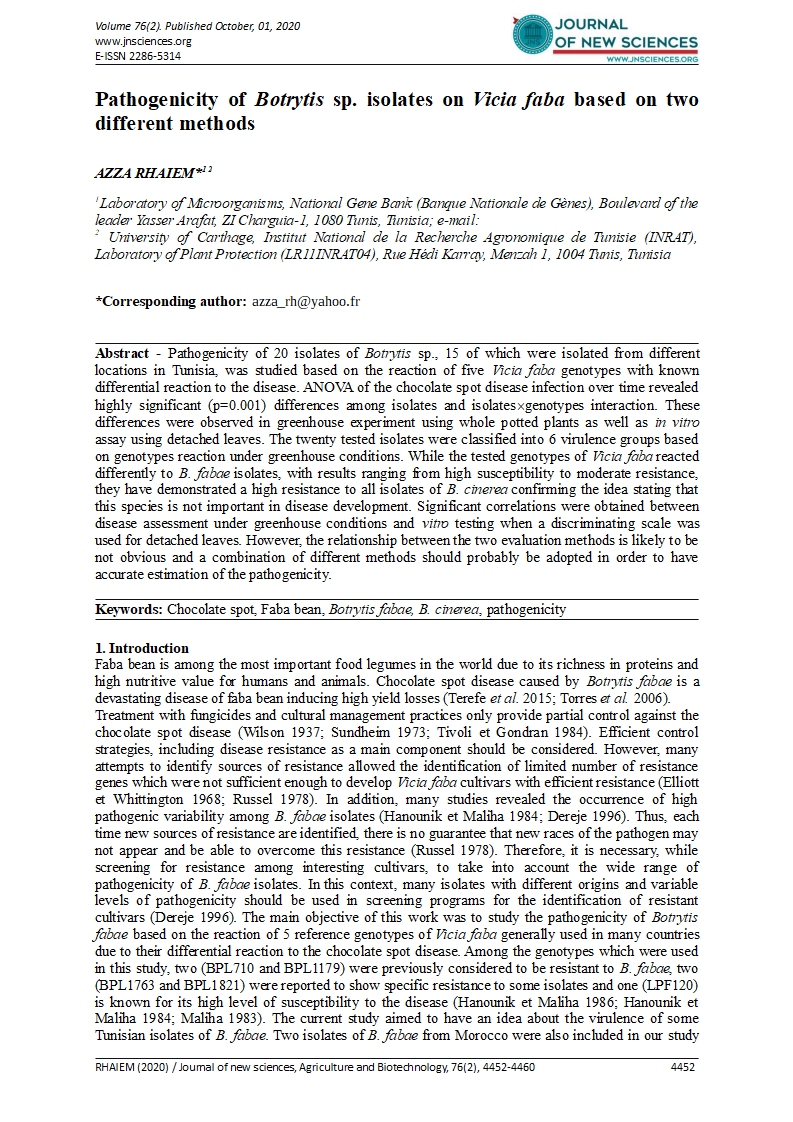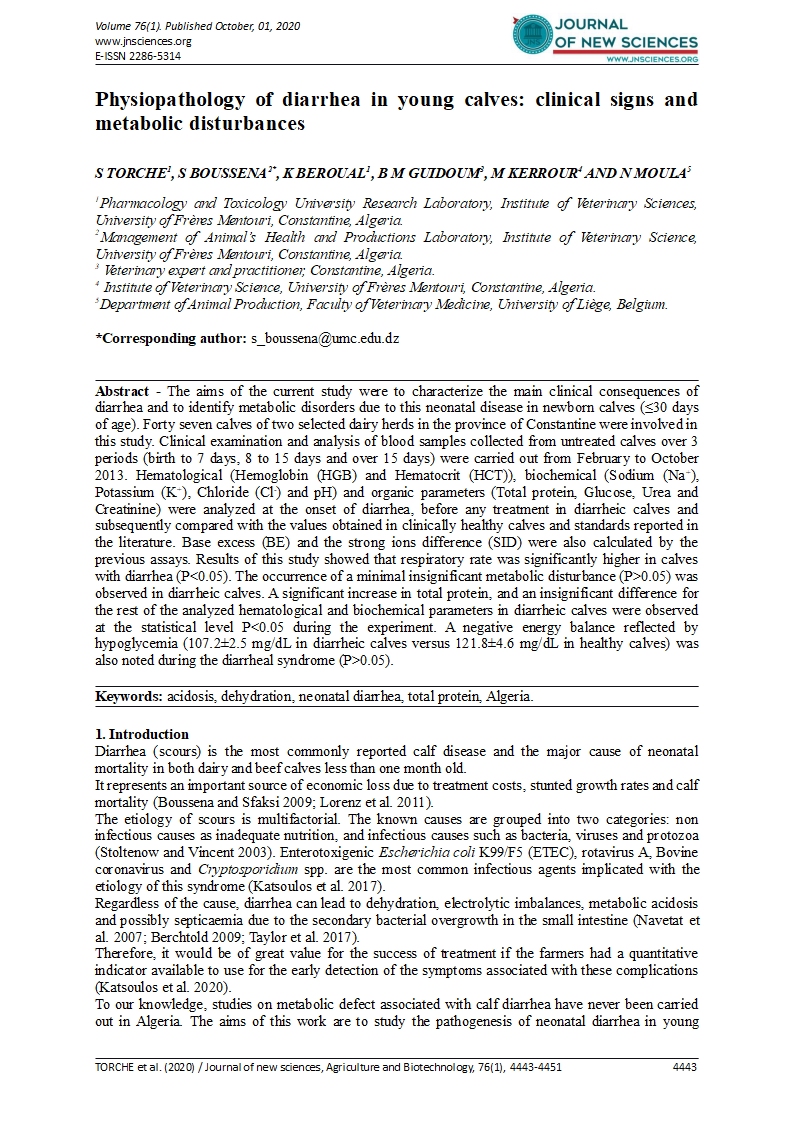- Category: Volume 76
- Hits: 3109
Effets de l’application foliaire d’un extrait liquide d’algue marine (EnteromorophaintestinalisLinnaeus Link.) sur la croissance végétative et la physiologie des jeunes plantes de tomate cultivées sous stress salin
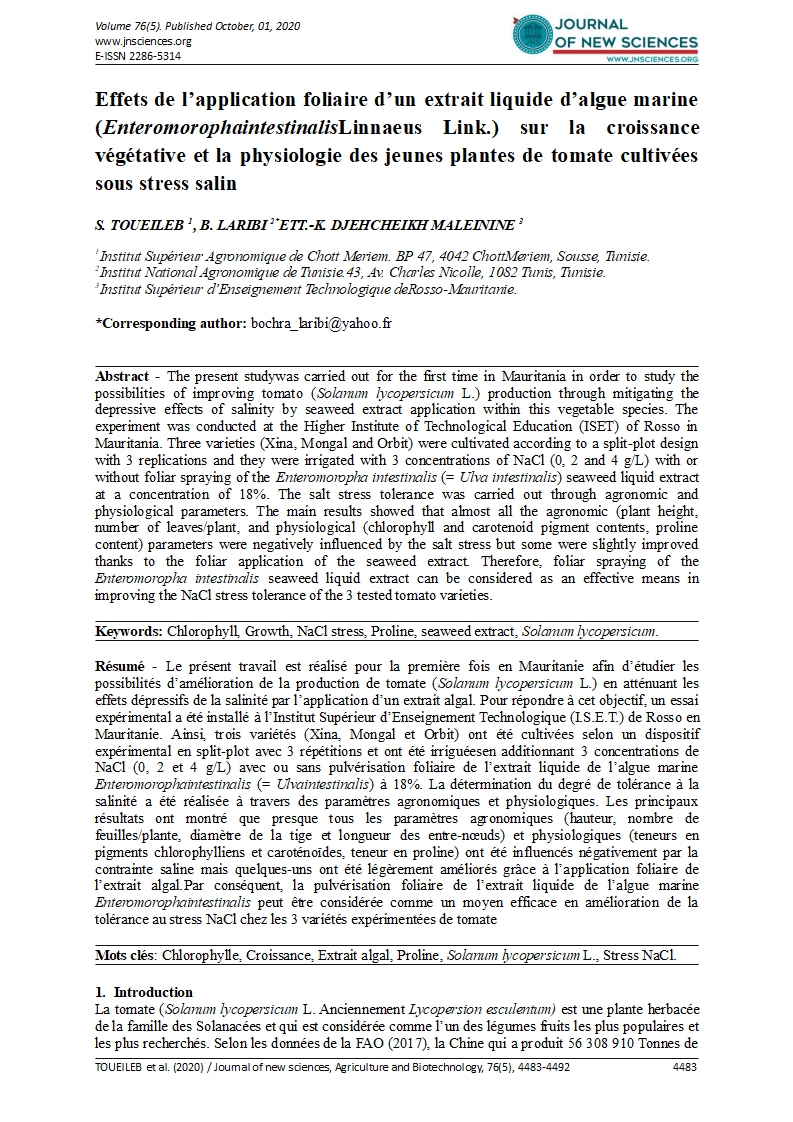
Effets de l’application foliaire d’un extrait liquide d’algue marine (EnteromorophaintestinalisLinnaeus Link.) sur la croissance végétative et la physiologie des jeunes plantes de tomate cultivées sous stress salin
S. TOUEILEB 1
B. LARIBI 2
-K. DJEHCHEIKH MALEININE 3
1Institut Supérieur Agronomique de Chott Meriem. BP 47, 4042 ChottMeriem, Sousse, Tunisie.
2Institut National Agronomique de Tunisie.43, Av. Charles Nicolle, 1082 Tunis, Tunisie.
3Institut Supérieur d’Enseignement Technologique deRosso-Mauritanie.
Abstract - The present studywas carried out for the first time in Mauritania in order to study the possibilities of improving tomato (Solanum lycopersicum L.) production through mitigating the depressive effects of salinity by seaweed extract application within this vegetable species. The experiment was conducted at the Higher Institute of Technological Education (ISET) of Rosso in Mauritania. Three varieties (Xina, Mongal and Orbit) were cultivated according to a split-plot design with 3 replications and they were irrigated with 3 concentrations of NaCl (0, 2 and 4 g/L) with or without foliar spraying of the Enteromoropha intestinalis (= Ulva intestinalis) seaweed liquid extract at a concentration of 18%. The salt stress tolerance was carried out through agronomic and physiological parameters. The main results showed that almost all the agronomic (plant height, number of leaves/plant, and physiological (chlorophyll and carotenoid pigment contents, proline content) parameters were negatively influenced by the salt stress but some were slightly improved thanks to the foliar application of the seaweed extract. Therefore, foliar spraying of the Enteromoropha intestinalis seaweed liquid extract can be considered as an effective means in improving the NaCl stress tolerance of the 3 tested tomato varieties.
Keywords: Chlorophyll, Growth, NaCl stress, Proline, seaweed extract, Solanum lycopersicum.

